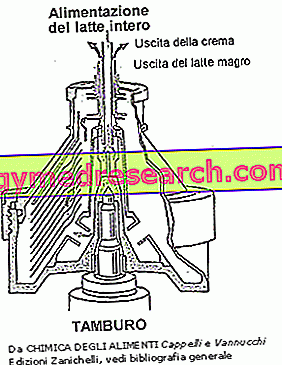Why do you run it?
The rachicentesi is a diagnostic / therapeutic practice which consists in taking a sample of CSF (cerebrospinal fluid) by introducing a needle between the L3-L4 or L4-L5 vertebrae. When performed for analytical purposes, the lumbar puncture allows the detection of suspected infections in the brain, verifying demyelinating pathologies and detecting the presence of possible neoplastic cells. Performed for therapeutic purposes, the rachicentesis allows to inject drugs directly into the sub arachnoid space and to reduce the intracranial pressure in case of hydrocephalus (accumulation of liquor in the cerebral ventricles that dilate).
But what are the possible post-rachicent complications or drawbacks? How do you interpret the results of cerebrospinal fluid taken by lumbar puncture?
Complications
Lumbar puncture is a relatively simple, low-risk and often atraumatic surgical procedure. However, the risk of inconveniences is real.
The complications of rachicentesi may be mild or more severe. An inexperienced or inattentive doctor could even endanger the patient's life.
Minor complications
- CEFALEA represents one of the most common problems in the immediate post-rachicentesi. It is estimated that over 40% of patients develop headaches shortly after the procedure ends; the headache can last for a few hours or continue for 2-8 days. The headache seems to be caused by the loss of fluid in the circulating tissues. It is not uncommon for headaches to be accompanied by episodes of vomiting and dizziness.
From the studies reported in the Merritt's Neurology manual (10th edition) it is observed that the intravenous injection of caffeine is often effective to reduce or remove the so-called "spinal headache".
- Even the LUMBAR PAIN is a slight complication of the rachicentesi: after the lumbar puncture, the patient often feels an unpleasant sensation of malaise accompanied by more or less intense lumbar pain, near the injection point. Less frequently, pain is perceived in the epidural space.
- The temporary PARESTHESIA is an expression of the accidental contact of the needle (used in rachicentesis) with a spinal nerve root. This drawback is more often reported by patients during the procedure.
Serious complications
- ANESTHETIC TOXICITY: occurs when the patient subjected to rachicentesis is allergic to the injected anesthetic.
- It is possible, albeit less frequent, to apply BLOOD near the injection site.
- RARE THE BLOOD IN THE EPIDURAL SPACE and the EPIDURAL ENTRANCE.
- When lumbar puncture is performed in patients with brain tumor associated with intracranial hypertension, the complications are much more serious. The removal of intracerebral fluid leads to a reduction in the liquor pressure: in these patients, the aforementioned reduction in blood pressure can cause a sudden DESCENT OF CEREBELLAR TONS. * (Two lobules of the inner face of the cerebellum). It follows a marked bulbar suffering, tonic crises and death in a short time. Not surprisingly, brain cancer patients should avoid rachicentesi.
* the descent of the cerebellar tonsils is synonymous with cerebellar herniation / wedging
- Another complication (1-2% of patients subjected to rachicentesis) is the development of a severe THROMBOCYTOPENIA: the formation of a hematoma at the site of the lumbar puncture, which can compress on the marrow, is conceivable under similar circumstances.
Interpretation of results
Liquor analysis provides essential information to test for possible CNS involvement in a disease, by detecting inflammation, infection and tissue damage.
The liquor collected by means of rachicentesi is analyzed in its various qualitative and quantitative aspects: color, cell count, glucose and protein levels, presence of antibodies and pathogens, are the main characteristics evaluated in the liquor.
The table shows some general parameters of healthy and altered liquor: the alteration of the aforementioned parameters is an indicator of pathology / inflammation in progress.
| Analyzed features | Healthy liquor | Altered liquor |
| APPEARANCE | Clear ( rock water ) | Yellowish / opaque / pinkish: infection index in progress |
| LIQUOE PRESSURE (sitting position) | 10-18 cm H 2 O (8-15 mmHg): with patient lying on his side 20-30cm H 2 O (16-24 mmHg) with seated patient 8-10 cm H 2 O in newborns | Blood pressure is a sign of hemorrhage, inflammation or tumor of the brain |
| TOTAL PROTEINS (proteinorrachia) | 15-45 mg / dl | > 45 mg / dl: ongoing infection / inflammation |
| GLUCOSE (glycorrachia) | 2/3 of blood sugar (60 mg / dl) | Lower glucose levels indicate a possible infection |
| CHLORIDE (Clorurorrachia) | 700-750 mg / dl or 115-130 mEq / L | |
| CELL ELEMENTS (lymphocytes, histocytes, monocytes, polymorphonuclear cells | 2-5 / mm3 in the adult and 15-20 / mm3 in the newborn | The increase in the number of white blood cells indicates an ongoing infection |
Also and especially in the context of CNS diseases, the liquor - after having been collected by rachicentesis - undergoes centrifugation / filtration for the differential white blood cell count. For example, a number of leukocytes> 500 units / mm3 is an indication of ongoing purulent infection (eg meningitis).
The presence of any pathogenic microorganisms is detectable by laboratory analysis of the liquid taken by rachicentesis.
In conclusion, the analysis of cerebrospinal fluid is essential to ascertain or deny inflammations, infections, bleeding or cancer cells; the only possible way to collect a liquor sample is therefore the lumbar puncture.



